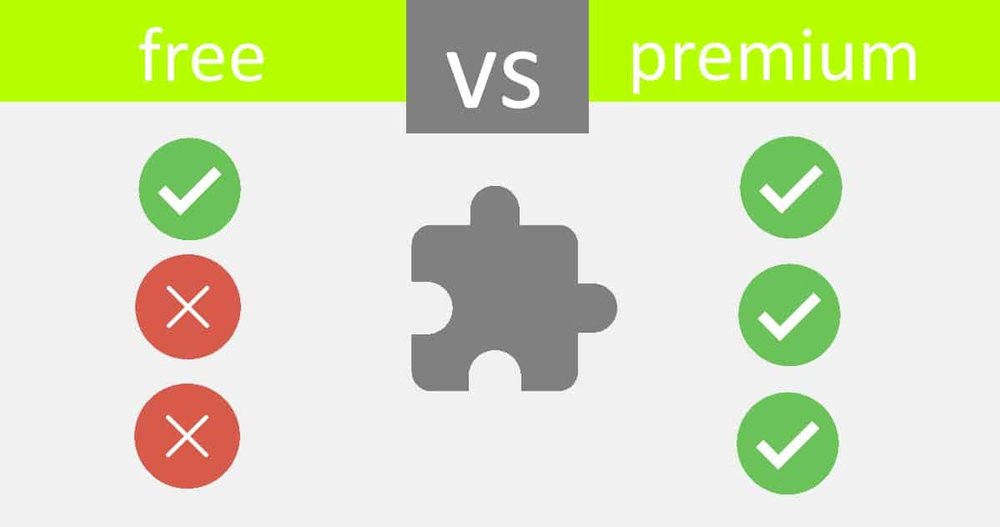There are a huge number of WordPress plugins available to extend WordPress – this has contributed to the success of WordPress bringing it to power 27% of the Internet’s websites.
Almost 50,000 free plugins are available from the WordPress plugin directory – as well as paid or “premium” plugins from third-parties.
But what’s the difference between the free and premium plugins?
Free plugins
Free removes the cost barrier to trying new software – it allows you to test out a plugin without committing – but it does come with more risk.
The WordPress plugin directory isn’t the only source for free plugins – many developers release plugins on their personal websites or GitHub and there are many third-party plugin directories.
However they’re not all equal – the official WordPress plugin directory has a strict quality control process that ensures plugins are not doing anything malicious or have security vulnerabilities. If security vulnerabilities are found they are fixed quickly by a community of developers that volunteer their time.
Other sources may not have the same level of quality control – and for this reason extreme caution should be used when using free plugins from other sources.
Code quality
The WordPress plugin directory often serves as an entry point for developers to release a plugin and start building their online presence as a developer – this results in plugins that have various levels of code quality.
To avoid being caught with a “bad” code – be wary of new plugins and check the updates and support history to make sure the plugin is being actively maintained by the developer.
Support
Typically when getting something for free there is no expectation for support. This is particularly true with the official WordPress plugin directory – developers can provide support through the plugins support page but are in no way obligated to.
This is important to remember because if you rely on this plugin for running your website you may end up in all sorts of trouble if something goes wrong.
Updates
Plugins on the WordPress plugin directory can receive free updates – but like support there is no expectation for developers to provide ongoing updates.
An update to WordPress or a change to a browser could stop the plugin from working, again leaving you in all sorts of trouble.
Premium plugins
Premium plugins are available through third-party directories or directly from plugin developers. They are called “premium” because they are paid for – the prices vary but typically are between $30 – $300.
There are three main advantages to premium plugins –
- time and cost – you won’t need to develop the plugin
- support
- updates
Code quality
The code quality for premium plugins is typically better than free plugins – this is largely because developers are earning an income that provides them time to improve the code.
This isn’t always true – but you can avoid issues by sticking with the “big” plugins (e.g. Gravity Forms), reading reviews and checking the quality of the free plugins provided by the same developer.
Support
When you pay for a plugin you become the customer – this introduces an obligation for support under consumer law.
Support is typically provided for 6 or 12 months after the purchase and is limited to installing and configuring the plugin.
Always check how long support will be provided.
Updates
It’s in the best interests of a premium plugin developer to to keep the plugin functioning and introduce new features through updates – this provides support to current customers, ensures the plugin stays functional and introduces new features to entice more customers.
However, because premium plugins are provided outside of the WordPress plugin directory updates are not automatically provided – the developer will need to host their own update server.
Always check that the plugin comes with automatic updates – and for how long.
